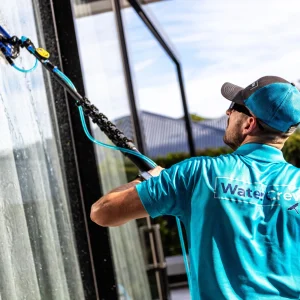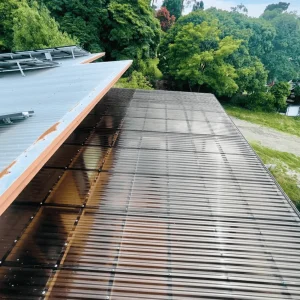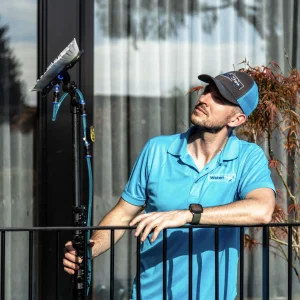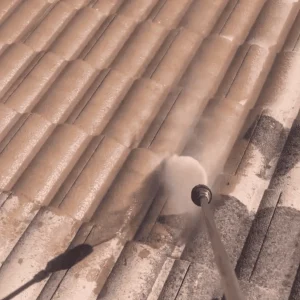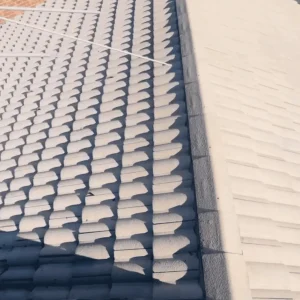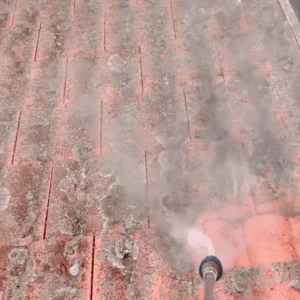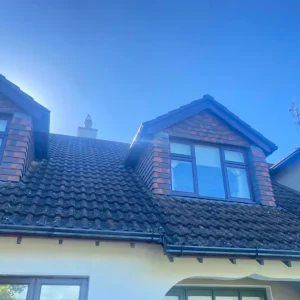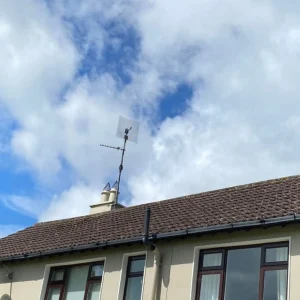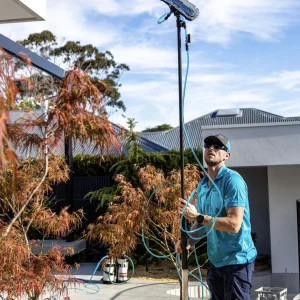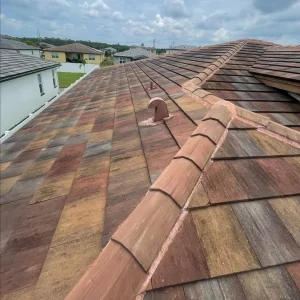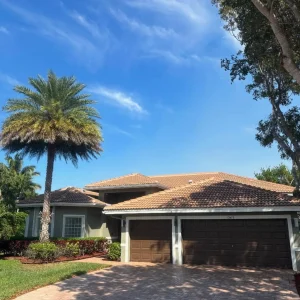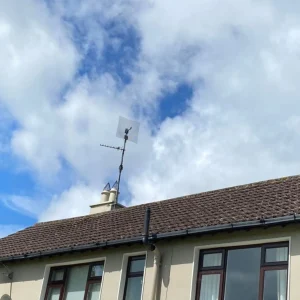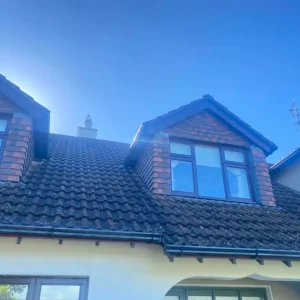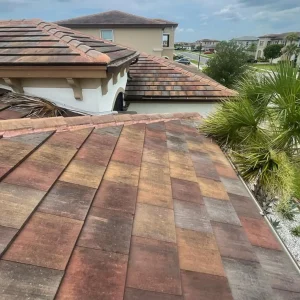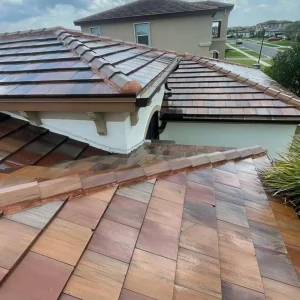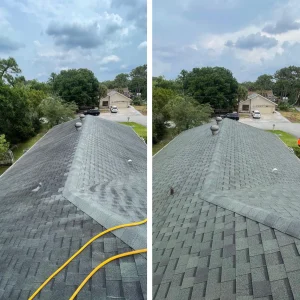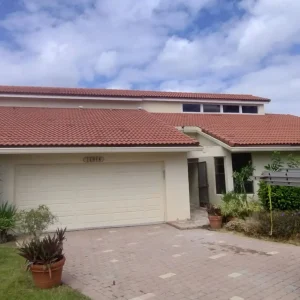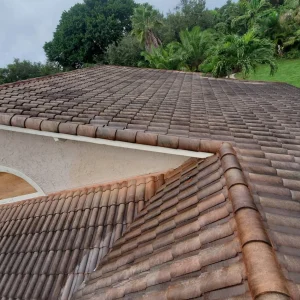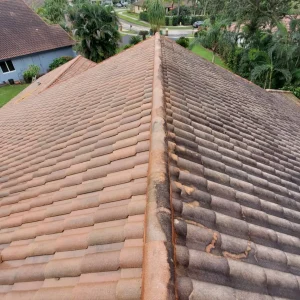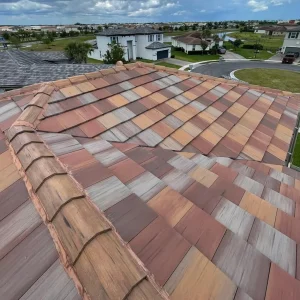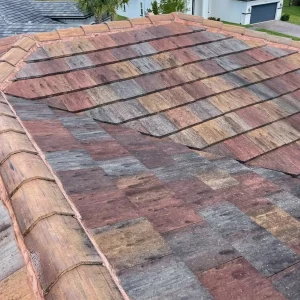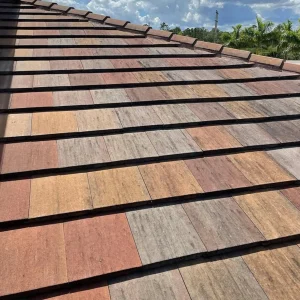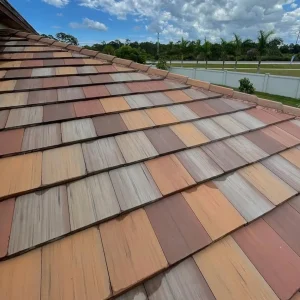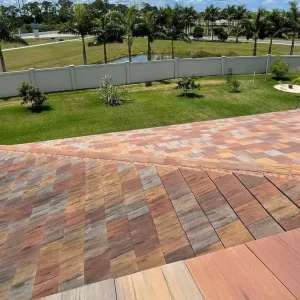Ever looked up and noticed black streaks on your tiles or moss creeping across your house? Soft wash roof cleaning might be the fix your home desperately needs. At Crew, we’ve cleaned enough rooftops to know the damage that builds when grime, algae, and lichen are left to fester, especially in Australia’s wild weather.
Let’s break down how soft washing works, why it’s a smarter choice than blasting your roof with high pressure, and when it’s time to give us a bell.
- High quality work, professional team, real attention to detail. An excellent job every time. Highly recommended!read moreread lesssally ross10/30/2025
- I rang up on a public holiday & someone came over later that day … More than happy with the result … he was courteous, professional & polite & will be DEFINITELY using WaterCrew Window Cleaning again !!read moreread lessAndrea LeVin10/03/2025
What Even Is a Soft Wash?
First up — soft washing isn’t just a fancy name for low-pressure hosing. It’s a chemical-based, low-pressure cleaning method that gently removes organic gunk like mould, algae, moss, and lichen without blasting your tiles or metal sheets into next week. Unlike high-pressure washing, which can cause damage to roofing materials and delicate surfaces, soft washing relies on a specialised cleaning solution to kill harmful growth at the root.
Think of it like treating a weed with herbicide instead of just ripping off the leaves — the stain won’t just vanish, it’ll stay gone.
What’s Best?
Power washers and high-pressure water sprays can damage your roof material:
- Minimal Roof Damage: High pressure water can strip protective coatings, loosen roof tiles and even cause water damage. Soft washing uses biodegradable chemicals and minimal pressure to gently clean fragile surfaces.
- Longer Lasting Results: Soft washing not only cleans but also sanitises the surface, killing mould spores and reducing future organic growth.
- Eco Friendly: Uses biodegradable chemicals and fresh water, protects horizontal surfaces, surface drains and your garden.
- Safe on Various Surfaces: Soft wash is the preferred method for fragile surface types, including porous roof tiles and roofing materials that deteriorate under high water pressure.
Plus soft washing doesn’t just look good – it’s part of the overall maintenance of roofs. When your roof is clean and treated for organic growth you’re extending its life and protecting the structure underneath from hidden water damage and potential rot.
What’s Soft?
If you’re reading this, your roof probably isn’t as good as it used to be. Maybe it’s streaked with black mould, speckled with moss growth or just plain dirty with biological growth making your whole roof look old and neglected. You’re not alone – this is a common problem for Aussie homeowners battling tough local conditions like algae removal, moss growth and lichen on roofs.
Enter soft wash roof cleaning: a gentle, cost effective and safe method gaining popularity across Australia. It’s safer than power washing or traditional pressure washing tools yet just as effective on various surfaces. Whether you have tiled roofs, concrete roofs, terracotta roofs, roof slates or even low pitched roofs, this method can clean your exterior surfaces thoroughly without damaging your roof.
Unlike a pressure washer that blasts grime off, soft washing relies on a chemical reaction that lifts stains, sanitises the surface and ensures moss, mould and lichen won’t grow back straight away. It’s perfect for homeowners who want results that last not just a temporary fix.
What Exactly is Soft Wash Roof Cleaning?
Soft washing applies biodegradable chemical solutions using specialized equipment, removes biological growth without harsh chemicals or high pressure water.
Benefits at a glance:
- Removes algae, moss from roofs, lichen from roofs, and black mould effectively
- Environmentally safe
- Extends the life expectancy
- Suitable for every roof type, including delicate surfaces* Can be used on entire roof systems and other exterior surfaces like pergolas and garages
Your roof is pitched, flat, metal or tiled? No worries! Soft wash roof cleaning can be used on all. Adjustable nozzles (like a projection nozzle) and avoiding spray into the wind during application gives us the control and coverage we need.
The Process
Professional services follow this process:
Step 1: Roof Inspection
Experienced technicians inspect your roof condition, type of roof, and look for damage to the roof and provide quotes. They’ll also note any solar panels, skylights or custom features that need extra care.
Step 2: Preparation
Gutters are cleared for drainage and plants around your property are protected with rinse water. Protective clothing is worn, and application equipment is set up safely, often with a roofing ladder.
Step 3: Soft Wash Solution Application
Specialised application equipment applies biodegradable chemicals to gently penetrate and kill moss growth, algae and mould spores. Different types of growth may require slightly different mixes.
Step 4: Dwell Time
Solutions dwell for 10–20 minutes under optimal conditions. Wind and temperature affect this stage and technicians know how to work around those factors.
Step 5: Gentle Rinse
Low pressure fresh water rinses away biological growth and cleaning solutions leaving your roof tiles clean. The gentle rinse prevents damage to surface coatings and surface drains.
Step 6: Protective Coating (Optional)
For maintenance purposes a protective coating can prevent future growth and enhance curb appeal for potential buyers. It’s especially useful on porous tiles and in shaded areas.
Step 7: Final Inspection and Site Clean-Up
Technicians finish by checking that all roof areas are covered and surface drains aren’t clogged. They’ll make sure no residue is left behind and your property is left tidy.
Common Problems Solved
Roof Staining
Soft washing removes stubborn algae and mould causing roof staining.
Moss and Lichen
Soft washing gently removes moss and lichen that trap moisture, preventing future roof damage.
General Dirt and Grime
Effective cleaning removes accumulated dirt and pollutants, keeping your exterior clean.
Discolouration on Terracotta Roofs
Red or orange terracotta roofs can become patchy from lichen or dirt build-up. Soft wash restores their original colour.
Roof Moss & Water Run-Off
A mossy roof can slow water drainage, leading to pooling and eventual water damage. Soft washing prevents this by removing blockages at the source.
How Often Should You Clean Your Roof?
Every 2–3 years, but properties in shaded or damp areas may need annual roof cleaning. If you see roof staining or moss returning quickly, it may be time to clean sooner.
Some pros also recommend soft washing in spring or early autumn—these are the most stable weather and best conditions for chemical performance and rinsing.
Who to Choose
Not all roof cleaning services are created equal. Look for:
- Experience with different surfaces (not just Colorbond or tiles)
- Clear explanation of cleaning methods used
- Photos of previous jobs (especially customers’ roofs like yours)
- Proof of insurance and safety gear, including protective clothing
- Knowledge of roof slates, concrete roofs and low-pitched roofs
- Transparent pricing per square foot of roof or per job
Ask if they include a post-clean treatment or protective coating in their price or if that’s extra.
Ready to Clean Your Roof?
For a full home makeover, consider combining your roof cleaning with window cleaning from our friends at Window Cleaning Melbourne Crew—experts who will make your whole property look amazing.
When hiring roof cleaning services, make sure they specialise in soft washing for customers’ roofs. Ask for customer reviews, details on chemicals used, protective clothing and quotes.
Got more soft washing questions? Send us a photo of your roof—we’ll guide you through the best cleaning methods.
Protect your property, appeal to potential buyers and avoid costly repairs with soft wash roof cleaning, keep your home looking its best.
How long does a roof soft wash last?
When It Works, and When It Wears Off
Generally, a professional roof soft wash can keep things clean for 1 to 5 years, depending on:
- The type of roof surface (roof tiles, Colorbond, asphalt shingles, clay tiles)
- Local weather conditions (hello, tropical QLD and dusty conditions inland)
- Surrounding vegetation and airborne spores (got gum trees or algae spores wafting over your gutters?)
- The quality of the soft wash method used and the cleaning solutions
- Whether any preventative soft washing treatment like biocide was applied
In coastal or subtropical regions like Brisbane or Darwin, you’ll likely see biological growth or lichen spores reappear around the 12–24 month mark due to heat, humidity, and external conditions. In drier or cooler climates (think inner VIC or SA), your roof might stay clean for 3–5 years under ideal conditions.
What Affects the Lifespan?
Here’s the short version: nature, surface, and service.
- Roof types: Terracotta and concrete tiles grow moss and green algae faster than a wet sponge in a cupboard. Colorbond and delicate roofing materials hold up longer if the soft washing process is done properly.
- Climate and external conditions: The wet in the Top End is brutal for roofs. Same with spring pollen or autumn leaf drop in the southern suburbs. Dry and dusty conditions can add a layer of tough dirt that sticks.
- Surroundings and exposure: Overhanging trees = shade and spores. And bore water spray? That’ll stain your ridge capping quicker than you can grab a hose.
- Wash quality and cleaning methods: Some soft washing businesses skimp on dwell time or rinse too early. If the sodium hypochlorite or biodegradable chemicals don’t get time to soak in, organic growth wins. Professional roof cleaning services use eco-friendly cleaning solutions and innovative cleaning solutions designed for long-term results.
What’s in a Soft Wash Solution, Anyway?
No, it’s not just gallons of water mixed with household bleach. A proper soft wash roof cleaning mix usually contains:
- Sodium Hypochlorite – the active ingredient that kills built-up biological growth
- Surfactants – help the entire cleaning solution cling to roof shingles and exterior surfaces
- Water – clean water blended in correct cleaning chemicals ratios
- Oxygen-based boosters – for algae and lichen growth on delicate roofing materials
What to Expect from a Pro Soft Wash Crew
Here’s how a proper soft washing cleaning procedure should run:
- Roof inspection – Spot roof damage, check flashing, loose tiles, cracked asphalt shingles
- Debris removal – gutter cleaning and clearing dirt level, nests, or moss returns
- Pre-wet sensitive areas – windows, solar panels, painted trims, garden plants
- Apply soft wash mix – Even coverage of gallons of cleaning solution, left to dwell 15–30 mins
- Rinse (if needed) – Sometimes left to weather off naturally for tough dirt or dead moss algae
- Post-treatment inspection – Look for patchy growth types or signs of rapid regrowth
Soft Wash Maintenance Checklist
Want your clean property roof to stay clean? Here’s a soft washing checklist broken down by conditions:
Tropical & Subtropical (QLD, NT):
- Trim trees before the wet
- Gutter cleaning before and after storm season
- Annual cleanings with soft washing treatment or biocide
Temperate & Coastal (NSW, VIC, SA):
- Clear spring pollen and autumn leaves
- Respray every 2–3 years depending on exposure
- Monitor moss and harmful growth in shaded spots
Cooler or Alpine (TAS, highland VIC/NSW):
- Inspect for ice dam roof damage
- Spot treat moss every 3–4 years
- Use eco-friendly cleansers to avoid damage to roofing materials
Cost vs. Longevity
Absolutely — especially compared to pressure washing or full roof restoration. Here’s a simple comparison:
| Service | Cost (Avg) | Lifespan | Surface Risk |
|---|---|---|---|
| Soft Wash | $350–$1,200 | 2–5 years | Minimal (safe on all roofs) |
| Pressure Wash | $300–$900 | 1–2 years | High (can crack tiles, strip paint) |
| Roof Repaint | $2,500–$6,000 | 7–10 years | Low, but costly upfront |
Compared to traditional pressure washing, the soft wash method provides long-term results without the risk of water damage, damaging tiles, or expensive repairs. A traditional high-pressure cleaning job may need redos, damage guarantees, or end up voiding roof warranties.
You’re not just paying for a clean roof — you’re avoiding damage to roofing materials, reducing the risk of dead plants, and protecting your home’s exterior surfaces. Plus, many professional cleaners now offer a 3-year guarantee against moss regrowth.
Can You DIY Soft Wash?
Technically, yes. But should you? That’s where it gets tricky.
DIY soft washing needs:
- Proper soft washing process tools (not a pressure washer)
- Biodegradable solution in the right blend of water
- Protective gear and knowledge of water pressure and roof pitch
You’ll also need to know:
- How much water per minute does your gear put out
- What kind of inch water hose and gallons of water are required
- The difference between pressure washing and soft washing in terms of safety
We’ve seen plenty of folks burn garden plants, damage roofing materials, or fall off while cleaning delicate roofing materials. It’s a high-risk job best left to a professional power washing service or a friendly roof cleaning service that offers a detailed quote and a customer satisfaction guarantee.

Your satisfaction is our top priority. We tailor our services to meet your specific needs

We are committed to environmental responsibility. Our cleaning products are eco-friendly.

Pricing
We offer competitive pricing without compromising on the quality of our services.

Expertise
As a locally owned and operated company, we understand the unique needs of our community.
FAQ
Will soft wash hurt my plants?
No. We protect plants and use plant-safe products.
Can soft wash remove paint from my roof?
No. Soft wash is safe for all roof coatings and paints.
How long does a soft wash take?
2-4 hours depending on your square foot roof size.
Can I use household bleach for soft washing?
Is soft wash expensive?
Soft wash is cost-effective and prevents the extra cost of potential roof repairs.

